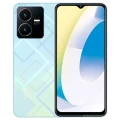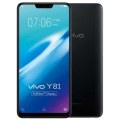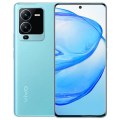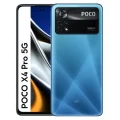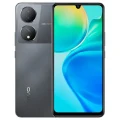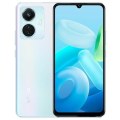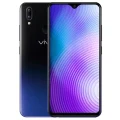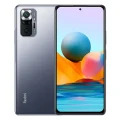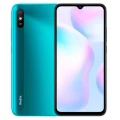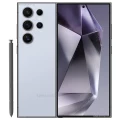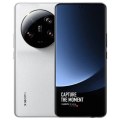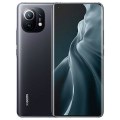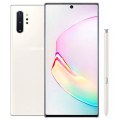Vivo Y50
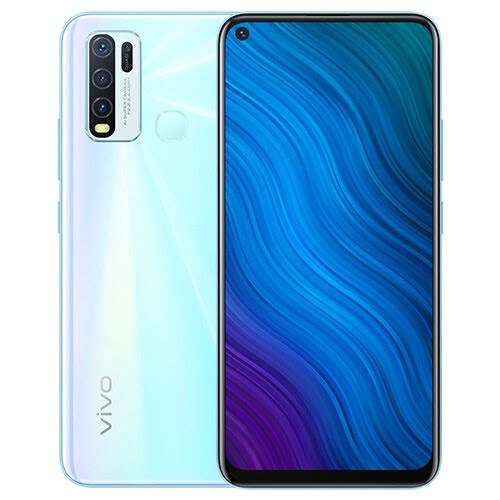

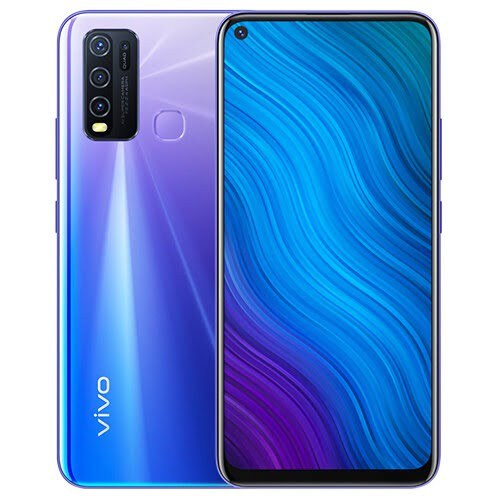

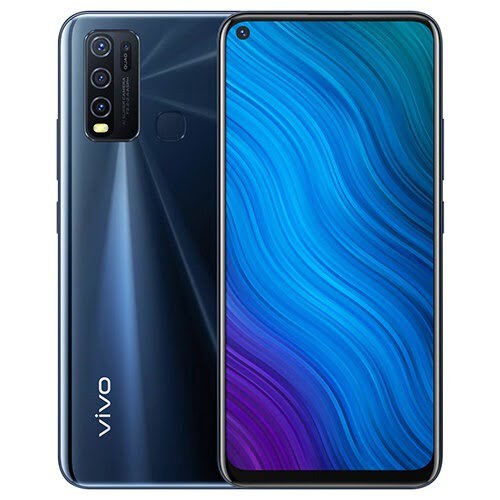
Vivo Y50 Price in Bangladesh
The Vivo Y50 is available for BDT 19,990. The 6.53-inch, 102.9-cm2 (~83.1% screen-to-body ratio), Super AMOLED capacitive touchscreen, 16 million color display, and resolution of 1080 x 2400 pixels in a 20:9 ratio (~403 PPI density) are features of the new Vivo Y50 Android/smartphone. The Qualcomm SM6125 Snapdragon 665 (11 nm) Octa-core (4×2.0 GHz Kryo 260 Gold & 4×1.8 GHz Kryo 260 Silver) CPU powers the Vivo Y50. It includes 128 GB of internal storage that can be increased using microSDXC (dedicated slot) external storage, and 8 GB of RAM. This fashionable gadget features a 16 MP camera on the front and 13 MP, 8 MP, 2 MP, and 2 MP cameras on the back. A regular 5000 mAh Li-polymer battery was used to power it.
Specifications
General
| Model | Vivo Y50 |
| Announced | 12-04-2020 |
| Released | 12-04-2020 |
| Status | Available |
| Official price | 8GB 128GB ৳19,990 |
Design
| Dimensions | 162 x 76.5 x 9.1 mm (6.38 x 3.01 x 0.36 in) |
| Weight | 197 g (6.95 oz) |
| Colors |
Starry Black, Iris Blue, Iris Blue, Pearl White |
Network
| Technology | GSM / HSPA / LTE |
| 2G Network |
GSM 850 / 900 / 1800 / 1900 - SIM 1 & SIM 2 |
| 3G Network |
HSDPA 850 / 900 / 2100 |
| 4G Network | LTE band 1(2100), 3(1800), 5(850), 7(2600), 8(900), 38(2600), 40(2300), 41(2500) |
| GPRS <strong>GPRS</strong> (General Packet Radio Service) is a packet oriented mobile data service on the 2G and 3G cellular communication system's global system for mobile communications (GSM), Generally, GPRS is used for the purpose of wireless data transfer, such as sharing pictures and videos or browsing the Internet via a mobile phone connection. | |
| EDGE <strong>EDGE</strong> (Enhanced Data GSM Environment) is a wireless network technology generally considered the next step in the 2G network offers data transfer rates up to four times faster than ordinary GSM networks, Generally, EDGE is used for the purpose of wireless data transfer, such as sharing pictures and videos or browsing the Internet via a mobile phone connection. | |
| Speed | HSPA 42.2/5.76 Mbps, LTE-A |
Display
| Display Type <strong>Display Technology => </strong> A number of display technologies and types used in mobile phones => TFT (Thin Film Transistor), IPS (In-Place Switching), OLED (Organic Light Emitting Diode), AMOLED (Active-Matrix Organic Light-Emitting Diode), Super AMOLED (an even advanced version of AMOLED), Resistive Touchscreen (Resistive touchscreens contain two layer of conductive material with a very small gap between them which acts as a resistance), Capacitive Touchsceen (Capacitive touchscreen technology consists of a layer of glass coated with a transparent conductor) | IPS LCD capacitive touchscreen, 16M colors |
| Size | 6.53 inches, 102.9 cm2 (~83.1% screen-to-body ratio) |
| Resolution | 1080 x 2400 pixels, 20:9 ratio (~403 ppi density) |
Camera
Main camera
| Camera Setup | Quad |
| Primary <strong>Camera</strong> is able to capture photographs and usually videos, The most important characteristics of a camera are the resolution (measured in megapixels), lens focus type (fixed or automatic), higher megapixel cameras are known to capture higher quality photos, but not always a good measurement of the photos quality. |
13 MP, f/2.2, (wide), PDAF 8 MP, f/2.2, 13mm (ultrawide), 1/4.0&amp;quot;, 1.12µm 2 MP, f/2.4, (macro) 2 MP, f/2.4, (depth) |
| Features |
LED flash, HDR, panorama |
| Video | 1080p@30fps |
Selfie camera
| Camera Setup | Single |
| Primary <strong>Camera</strong> is able to capture photographs and usually videos, The most important characteristics of a camera are the resolution (measured in megapixels), lens focus type (fixed or automatic), higher megapixel cameras are known to capture higher quality photos, but not always a good measurement of the photos quality. |
16 MP, f/2.0, (wide) |
Hardware
| Chipset <strong>Chipset</strong> is a group of integrated circuits designed to perform one or a more dedicated functions, often with real time computing constraints, Popular smartphones are equipped with more advanced embedded chipsets that can do many different tasks depending on their programming. | Qualcomm SM6125 Snapdragon 665 (11 nm) |
| CPU <strong>CPU</strong> (Central Processing Unit) mostly known as processors, CPU processes instructions in order to carry out certain functions that make your device operate properly. Processors are often described as the brain of computers, smartphones and tablets, Smartphones and tablets rely on processors to carry out their every task, Processors are an incredibly important factor in selecting any type of computing device, including your smartphone. | Octa-core (4x2.0 GHz Kryo 260 Gold & 4x1.8 GHz Kryo 260 Silver) |
| GPU <strong>GPU</strong> (Graphics Processing Unit) is a single-chip processor designed to rapidly manipulate and alter memory to accelerate the creation of images in a frame buffer intended for output to a display, This includes things such as lighting effects, object transformations, and 3D motion. | Adreno 610 |
| RAM (Memory) <strong>RAM</strong> (Random Access Memory) is a type of computer memory that can be accessed randomly, any byte of memory can be accessed without touching the preceding bytes that allows information to be stored and accessed quickly from random locations. RAM is the most common type of memory found in computer systems, smartphones, tablets and other electronic devices. | 8 GB |
| Internal Storage <strong>Internal Storage</strong> is a data storage space (flash memory) mostly used in smartphones, tablets and other electronic devices where operating system, apps, music, photos, videos, files and other user data Is stored. | 128 eMMC 5.1 |
| Sensors <strong>Sensors</strong> are electronic components that detects and responds to some type of input from the physical environment. The specific input could be light, heat, motion, moisture, pressure and location, The output is generally a signal that is converted to use in computing systems, a location sensor, such as a GPS receiver is able to detect current location of your electronic device. |
Fingerprint (rear-mounted), accelerometer, proximity, compass |
Connectivity
| Bluetooth <strong>Bluetooth</strong> is a wireless communications technology for exchanging data between mobile phones, headsets, computers and other network devices over short distances without wires, Bluetooth technology was primarily designed to support simple wireless networking of personal consumer devices. | 5.0, A2DP, LE |
| Infrared <strong>Infrared</strong> connectivity is an old wireless technology used to connect two electronic devices. It uses a beam of infrared light to transmit information and so requires direct line of sight and operates only at close range. | |
| USB | 2.0, Type-C 1.0 reversible connector, USB On-The-Go |
| GPS <strong>GPS</strong> The Global Positioning System is a satellite-based radio navigation system, GPS permits users to determine their position, velocity and the time 24 hours a day, in all weather, anywhere in the world, In order to locate your position, your device or GPS receiver must have a clear view of the sky. | Yes, with A-GPS, GLONASS, GALILEO |
| NFC <strong>NFC</strong> (Near field communication) is a set of standards for smartphones and similar devices to establish peer-to-peer radio communications with each other by touching them together or bringing them into proximity, usually no more than a few inches. |
Battery
| Battery Type <strong>Battery Type => </strong> Cell phones run on various kinds of batteries depending on the manufacturer, phone size or shape and features. There are basically four types of cell phone batteries => Lithium Polymer, Lithium Ion, Nickel Metal Hydride and Nickel Cadmium. | Non-Removable Li-Po |
| Capacity <strong>Battery Capacity</strong> is a measure (typically in Amp-hr) of the charge stored by the battery, and is determined by the mass of active material contained in the battery. The battery capacity represents the maximum amount of energy that can be extracted from the battery under certain conditions. | 5000 mAh |
Vivo Y50 Review that Will Make You Rethink Mid-Range Smartphones
In the fast-paced world of smartphones, finding a device that balances performance, aesthetics, and affordability can be a challenge. Enter the Vivo Y50, a mid-range smartphone that promises to deliver on all fronts. Tech enthusiasts, smartphone users, and gadget reviewers alike are keen to see if this device truly stands out in a crowded market.
In this comprehensive review, we will explore the Vivo Y50’s key features and specifications. From its sleek design to its robust battery life, we’ll break down every aspect of this phone, providing you with the insights you need to determine if the Vivo Y50 is the right choice for you.
Design and Build Quality
Sleek and Modern Aesthetics
One of the first things you’ll notice about the Vivo Y50 is its sleek and modern design. The phone boasts a glossy finish with a reflective back that catches the light beautifully. Available in several eye-catching colors, the Vivo Y50 certainly doesn’t fall short in the looks department.
High-Quality Materials
The build quality of the Vivo Y50 is impressive given its price range. The phone features high-quality plastic that feels sturdy and premium in hand. The curved edges and slim profile make it comfortable to hold and easy to use with one hand.
Ergonomics and Usability
Ergonomically, the Vivo Y50 excels. The placement of buttons and ports is intuitive, making it user-friendly for everyday use. The rear-mounted fingerprint scanner is both fast and conveniently located, ensuring that unlocking your phone is a breeze.
Camera Performance
Quad-Camera Setup
The Vivo Y50 is equipped with a versatile quad-camera setup. It includes a 13 MP main sensor, an 8 MP ultra-wide lens, a 2 MP macro camera, and a 2 MP depth sensor. This variety allows users to capture a range of shots, from expansive landscapes to detailed close-ups.
Photo Quality
In good lighting conditions, the Vivo Y50’s camera performs admirably. Photos are sharp, vibrant, and well-detailed. The ultra-wide lens adds versatility, making it easy to capture group shots or wide landscapes. Night mode also enhances low-light photography, though there is room for improvement in reducing noise.
Video Capabilities
Video recording is another strong suit of the Vivo Y50. The device supports 1080p video recording at 30 frames per second, delivering smooth and clear footage. The electronic image stabilization (EIS) helps in reducing shakiness, resulting in more stable videos.
Display and Performance
Crisp and Clear Display
The Vivo Y50 features a 6.53-inch Full HD+ display with a resolution of 1080 x 2340 pixels. The screen is bright and offers excellent color reproduction, making it ideal for watching videos, playing games, or browsing the web.
Smooth Performance
Under the hood, the Vivo Y50 is powered by a Qualcomm Snapdragon 665 processor paired with 8GB of RAM. This combination ensures smooth performance in daily tasks and even handles performance-heavy applications with ease. Multitasking is seamless, and app load times are minimal.
Gaming Experience
For gaming enthusiasts, the Vivo Y50 does not disappoint. The Adreno 610 GPU provides a solid gaming experience, handling popular titles like PUBG Mobile and Call of Duty Mobile without significant lag or frame drops. The phone’s large display further enhances the gaming experience, offering immersive visuals.
Battery Life and Charging
Long-Lasting Battery
Battery life is a crucial aspect of any smartphone, and the Vivo Y50 excels in this area. The phone is equipped with a massive 5000mAh battery that easily lasts a full day of heavy use. Whether you’re streaming videos, playing games, or browsing social media, you won’t have to worry about constantly reaching for the charger.
Fast Charging Support
When it comes time to charge, the Vivo Y50 supports 18W fast charging. This means you can quickly top up your battery and get back to using your phone. In about an hour, you can go from zero to approximately 70% battery, which is quite impressive.
Power Management Features
The phone also comes with various power management features that help extend battery life. These include power-saving modes that limit background activities and optimize performance to ensure you get the most out of your battery.
User Experience
Intuitive Software
The Vivo Y50 runs on Funtouch OS 10, based on Android 10. The user interface is clean and intuitive, making it easy for both new and experienced users to navigate. The OS offers various customization options, allowing users to tailor their experience to their preferences.
Additional Features
The phone comes with several additional features that enhance the overall user experience. These include a smart assistant, gesture controls, and a customizable always-on display. These features add convenience and make the Vivo Y50 a pleasure to use daily.
Connectivity Options
Connectivity is another strong point of the Vivo Y50. The phone supports dual SIM, 4G LTE, Wi-Fi, Bluetooth 5.0, and GPS. These options ensure you stay connected, no matter where you are.
Price and Value
Competitive Pricing
One of the most compelling aspects of the Vivo Y50 is its pricing. Positioned in the mid-range segment, the phone offers excellent value for money. It competes with other popular models, such as the Xiaomi Redmi Note 9 Pro and the Samsung Galaxy M31, offering similar or better specs at a competitive price point.
Bang for Your Buck
When considering the Vivo Y50, it’s essential to weigh its features against its cost. The phone provides a premium feel, robust performance, and a versatile camera setup typically found in higher-end models. For tech enthusiasts and budget-conscious consumers, the Vivo Y50 is a smart choice.
Subscription and Warranty
Vivo also offers attractive subscription services and a warranty for the Y50. Subscribers can enjoy benefits like extended warranty periods, accidental damage protection, and priority customer service, adding even more value to the purchase.
Conclusion
Recap of Key Features
In summary, the Vivo Y50 is a strong contender in the mid-range smartphone market. Its standout features include a sleek design, robust camera performance, long-lasting battery life, and smooth performance. These elements make it an excellent choice for tech enthusiasts, smartphone users, and gadget reviewers.
Areas for Improvement
While the Vivo Y50 excels in many areas, there’s always room for improvement. Enhancements in low-light camera performance and software updates to streamline the user experience further would make this phone even more appealing.
Final Recommendation
If you’re in the market for a new smartphone that offers a blend of style, performance, and value, the Vivo Y50 deserves your consideration. Its impressive feature set and competitive pricing make it a worthwhile investment for anyone looking to upgrade their mobile experience.
